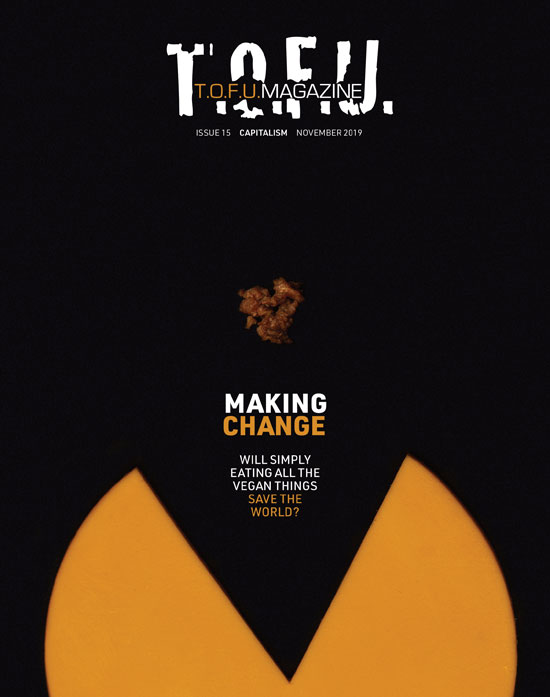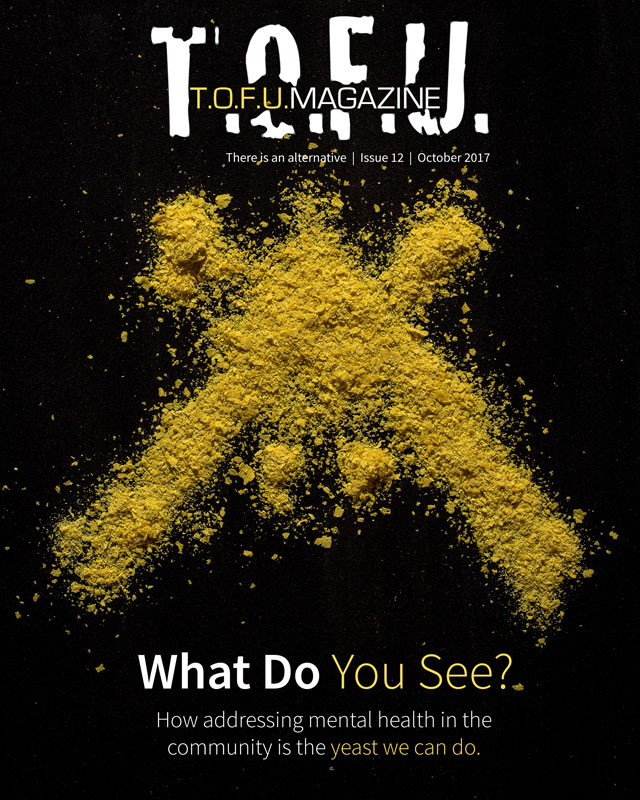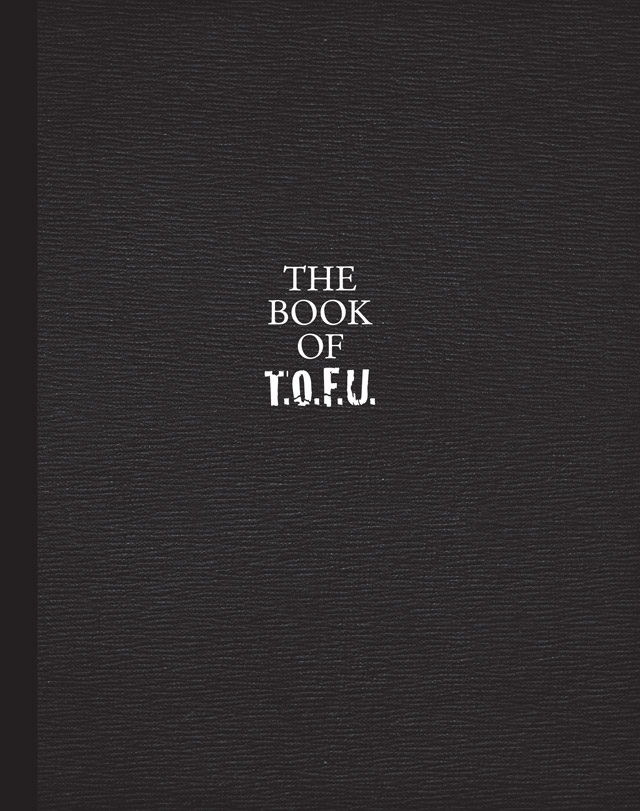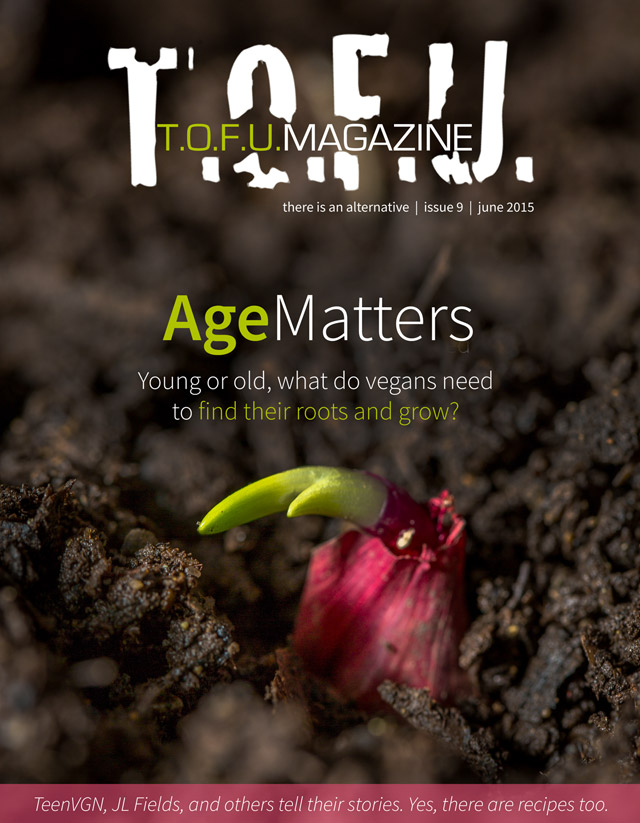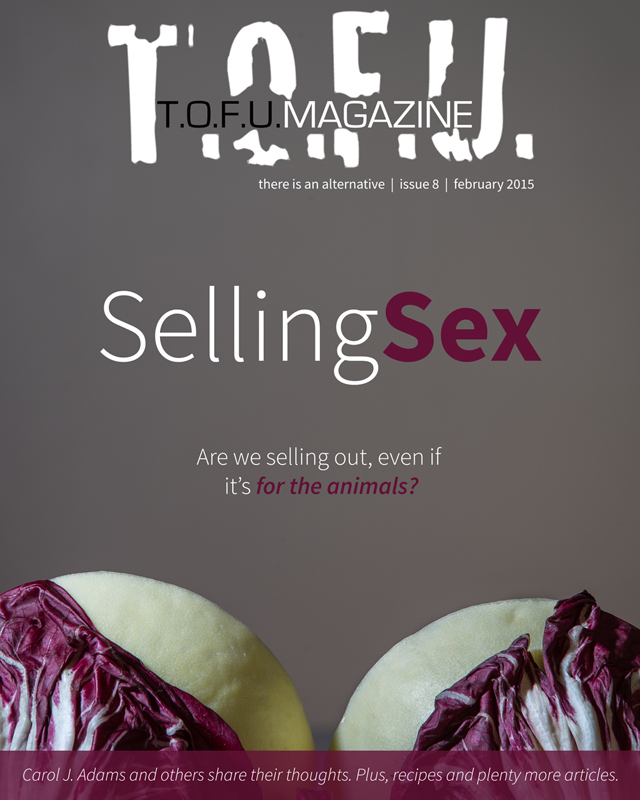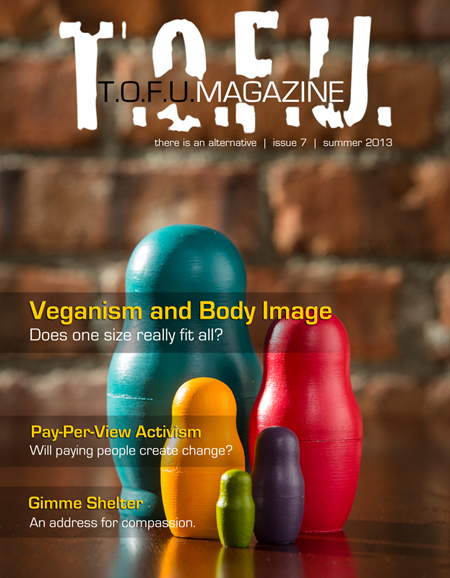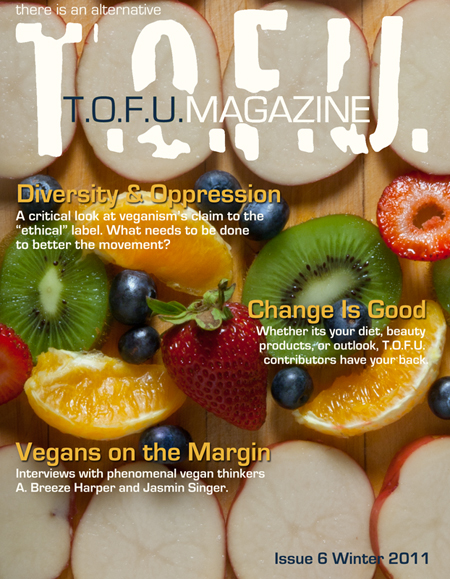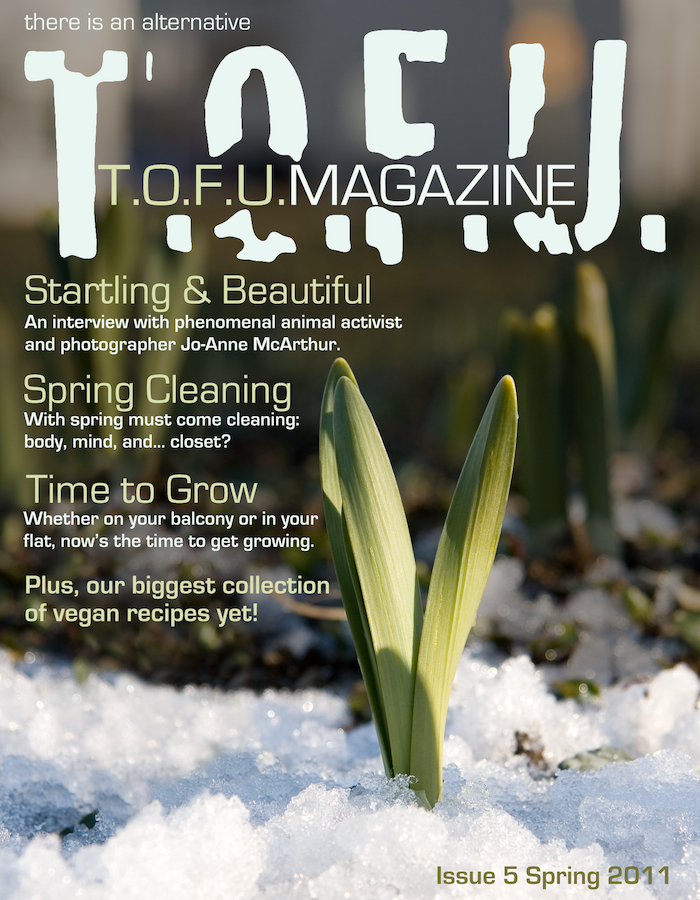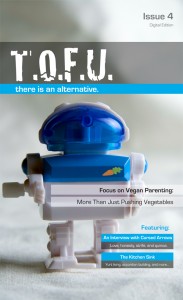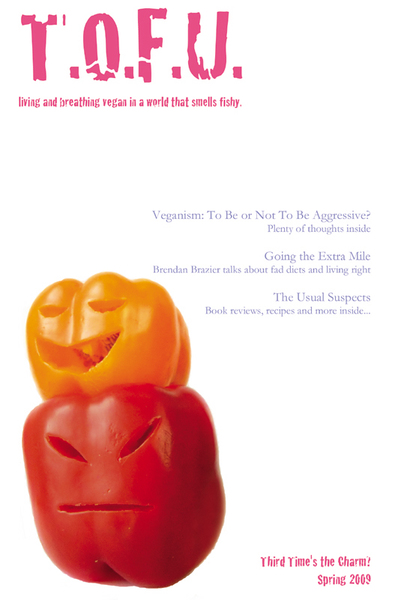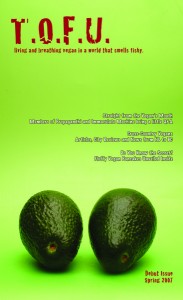Review: My New Roots
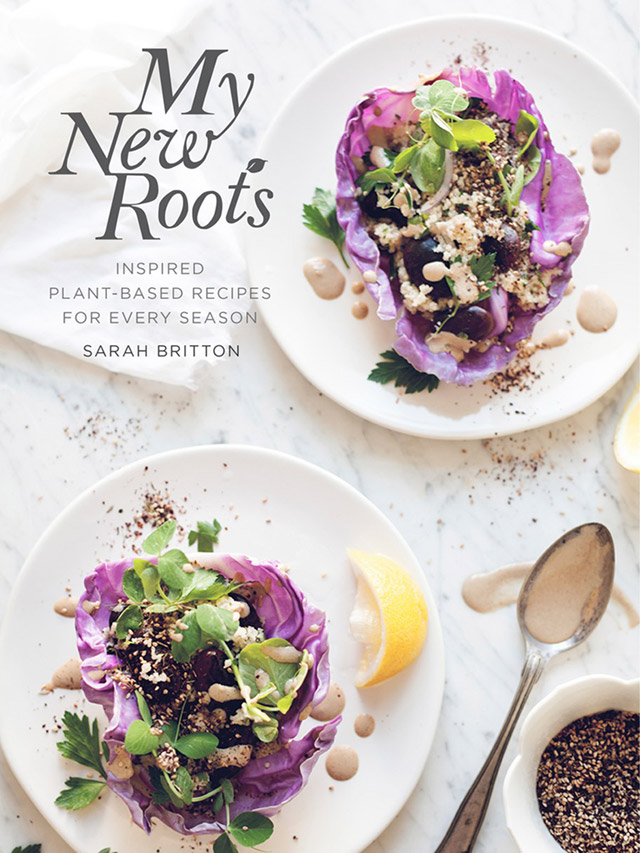
Editor’s Note: Although I’m not one for vegan policing in general, when Katie approached me about the complications she ran into with this review, we both thought it would be a great chance to discuss just how important it is to have clear definitions sometimes. With that in mind, we’d love to hear your opinion in the comments!
Vegan. Vegetarian-Paleo. Plant-based. Plant strong. Whole foods. High Raw. With the increasing popularity of alternative diets, there is ample room for general confusion. What is a paleo diet? High raw? Vegan? Plant-based? Plant-strong? Whole foods based? What are the differences? To some, plant-strong and plant-based mean a vegetarian diet with emphasis on plants most of the time, with an omnivore umbrella diet. Others still define plant-strong as a high-raw, legume and grain free diet. A whole foods diet could be paleo but not vegan, vegan but not paleo, vegetarian, or none of the above. Of all the diets (and I use the term hesitantly) above, veganism stands out with its ethical and moral connotations as well.
Many people approach veganism for a number of different reasons. Joni and Gerry highlight this in their book, Going Vegan. Animals, environment, sustainability, and health are just examples of why some curious omnivores begin the vegan journey, learning and exploring their knowledge, growing and perhaps changing their motivations to stay vegan. As veganism becomes more popular and more mainstream, there has also been an increase in media coverage, and media confusion. With celebrities famously going vegan to lose weight for a set time period, Mark Bittiman’s “vegan before 6†approach, or the media darlings who famously become ex-vegans after suffering from xyz, how is one to approach the subject? Gena has written a fantastic editorial about the potential relationship between orthoexia and veganism, and delves into the various motivations and subtle situational dependencies. Veganism, as Gena so gracefully articulates, can provide meaning and purpose in recovery.
With all this popularity, vegan resources have exploded. Although faced with the dreaded iceberg lettuce option at restaurants on occasion, more and more places are accommodating to various dietary requests. But what of the confusion? It was recently reported that the FDA has found milk product in chocolate bars labelled as vegan. As a lactose-intolerant vegan, I know that some dishes promised to me to be vegan were not. Mistakes happen, and you can only strive to do the best you can. But with veganism being lumped in with diet fads, confusion over the term, ethical reasons, and lifestyle invariability result.
My New Roots by Sarah Britton is the first cookbook from Sarah, author of the popular blog by the same name. It is a plant-strong, whole-foods book, never claiming to be vegan. Fans of her blog will instantly recognize the photography, style, and respect towards the ingredients. Sorted by season, it’s easy to eat seasonably with the cookbook. As a plant-strong, whole foods cookbook, it is invaluable along with YumUniverse for gorgeous photography and simple dishes that are layered, complex, and great to look at. But there is a caveat: although many recipes have vegan substitutions listed, there are a handful that are labelled as vegan that are clearly not. Some have honey with no substitution; some have eggs; and the ghee recipe with one ingredient: organic natural butter is listed as vegan. Honey can be easily substituted with other liquid sweeteners, but what of eggs? Eggs are trickier, and depending on the application may range from a commercial egg replacer to tofu or the infamous ’flax egg’. And what of ghee? Clarified butter can be made from vegan butter, but it is by no means the “natural, unsalted” butter called for in the recipe. I am sure that these are oversights, as many of the recipes in the book marked as vegan go to great lengths to suggest substitutions. But this labeling and confusion highlights potential issues to new vegans and non-vegans alike. You mean eggs are vegan? Butter is vegan? And herein lies the difference between a diet with ‘cheats’ and a lifestyle.
Personally, I believe that everybody is on their own journey in their approach to the dinner table. Some will remain proud meatavores while others will remain purposefully ignorant and just not want to learn. Others will approach vegetarianism, or veganism, at the direction of their doctor. Maybe they will be inspired by Beyoncé. Or maybe they’ll be inspired by animals, the planet, human rights, or equality. Whatever their reasons, they are on their journey, and I respect that. However, when things are labelled as vegan, I expect them to be vegan – devoid of any animal by-product. I acknowledge honest mistakes, and take such opportunities as learning experiences for everyone. With patience and care, vegans can explain why eggs are not considered vegan, and why some vegans eschew honey and bee pollen.
All of this started from a gorgeous cookbook. Is it any less worthy of shelf space due to this? I say no. In fact, I think it is a great conversation starter in addition to a fantastic cookbook. It illustrates in its own quiet way, one potential interpretation of a whole foods, plant-strong diet. I give you a sample recipe to decide for yourself: Sprouted Wild Rice with Pistachios and Spring Vegetables. Perfect for farmer’s market runs, it is tangy and delicious, both hot and cold. I had problems sprouting my rice, but my rice was also old, and I think that played a part in my difficulty. The pistachios add a wonderful crunch to the salad, and the dressing is deliciously bright. A jewel of a salad, it’d be perfect for potlucks. So while eating this salad, I encourage you to explore yourself: where are you on your journey?
To find out more about Sarah’s book, please visit her website.
If you wish to purchase the book through Amazon, you can find it here.*
Reviewed by Katie Hay
When Katie isn’t exploring new cuisines and challenging food conceptions in the kitchen, she can be found at farmer’s markets, building and designing bicycles, and planning her next life adventure.
* This post contains affiliate links. If the product is purchased by linking through this review, T.O.F.U. receives a modest commission.
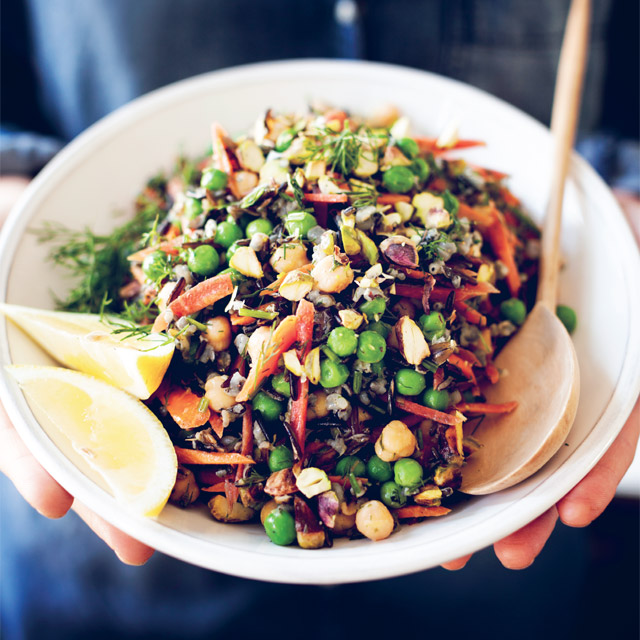
Sprouted Wild Rice With Pistachios and Spring Vegetables
Sprouting wild rice is a simple and delicious way to enjoy this amazing food completely raw. The process of sprouting wild rice is called “blooming†because the seeds actually unfold, very much like little petals, revealing the pale, tender insides. It’s a really fun thing to watch, however slowly, and it’s groovy to eat something you’ve seen transform over a few days.
This salad combines fresh springtime tastes and textures, all sauced up with a delicious dressing featuring bright lemon and spicy mustard. The herbs add the final layer of flavour, making this a salad that truly tastes alive! Because the rice is sprouted, it is very sweet, requiring salt in the salad—make sure to season it well to suit your own taste.
1 cup / 200g wild rice (makes 11â„2 cups sprouted rice)
2 tablespoons cold-pressed olive oil
2 tablespoons strong mustard
Grated zest of 1 organic lemon
2 tablespoons freshly squeezed lemon juice
1 teaspoon pure maple syrup
Fine sea salt
2 cups / 300g shelled green peas
1 cup / 165g cooked chickpeas
4 spring carrots, julienned
1â„3 cup / 7g chopped fresh chives
1â„3 cup / 7g chopped fresh dill
1â„3 cup / 40g raw pistachios, roughly chopped
- Rinse the rice well, put it in a glass jar or bowl, and cover with fresh, pure water. Let soak on the countertop overnight.
- In the morning, drain and rinse the rice; then cover it again with fresh water and put the jar in the fridge. Drain and rinse the rice at least twice per day for 2 to 3 days, until it has “bloomedâ€â€”some or all of the grains will have split open, and it should be tender enough to eat. Drain and rinse the sprouted rice and put it in a large bowl.
- Whisk the olive oil, mustard, lemon zest and juice, and maple syrup together in a small bowl, adding a few pinches of sea salt. Pour half of the dressing over the rice and fold to coat. Stir the peas, chickpeas, carrots, and herbs into the rice.
- In a dry skillet over medium heat, toast the pistachios until golden and fragrant, about 5 minutes (be careful not to burn them!). Add the toasted nuts to the salad. Pour the remaining dressing over and fold to combine. Serve.
Excerpted from My New Roots. Copyright © 2015 Sarah Britton. Published by Appetite by Random House, a division of Random House of Canada Limited a Penguin Random House Company. Reproduced by arrangement with the Publisher. All rights reserved.

